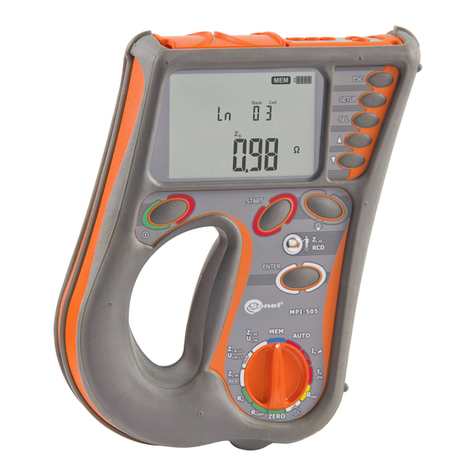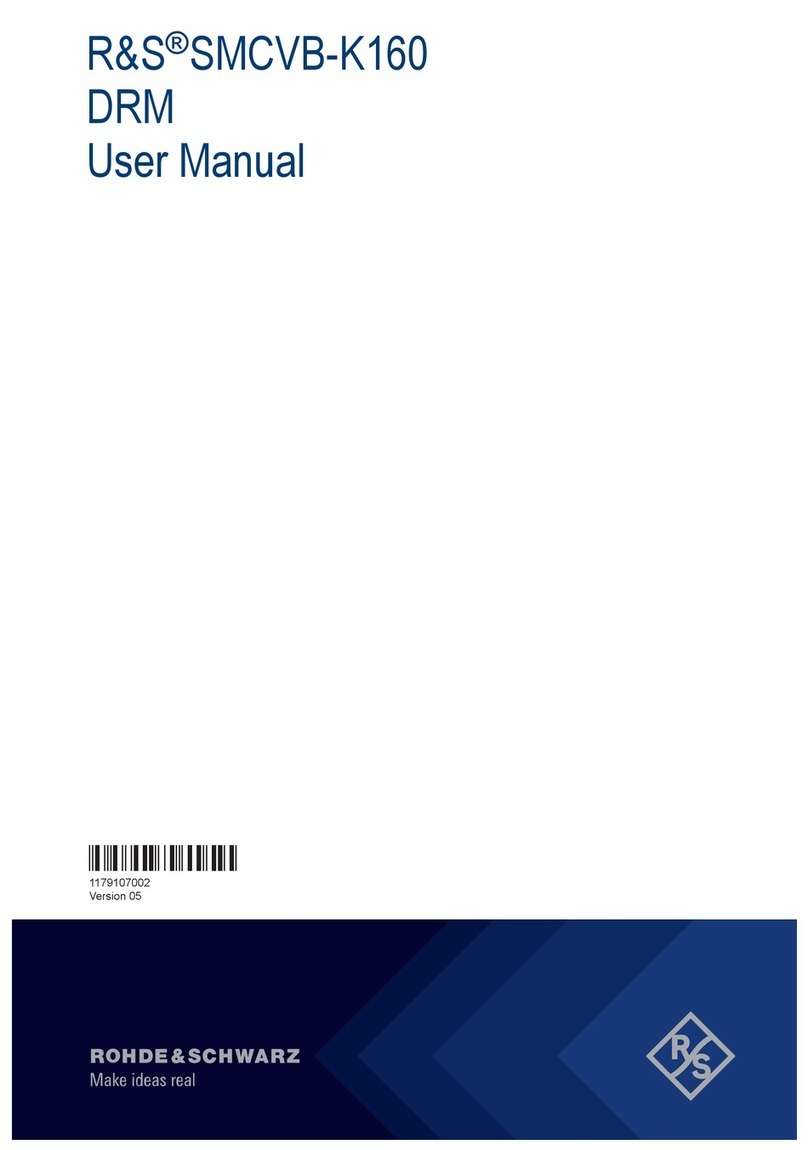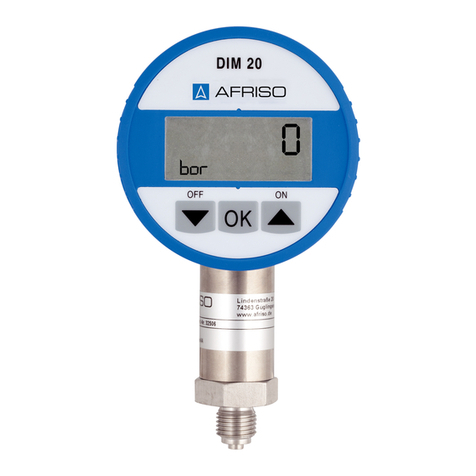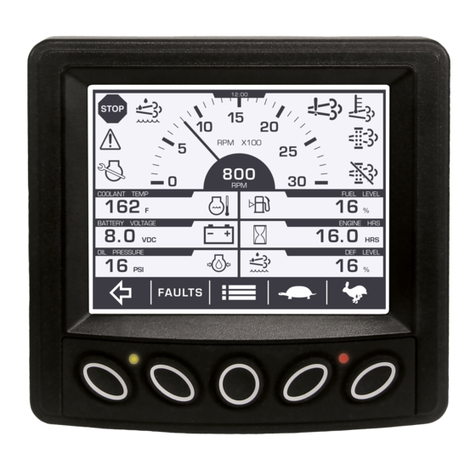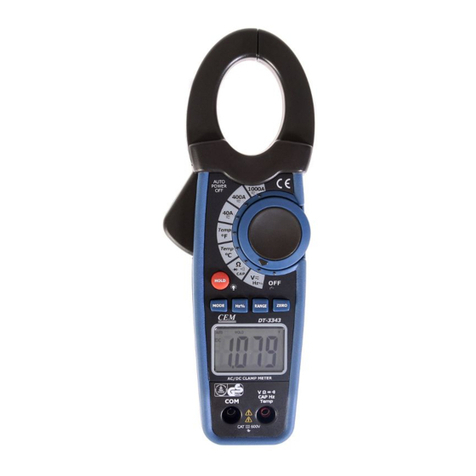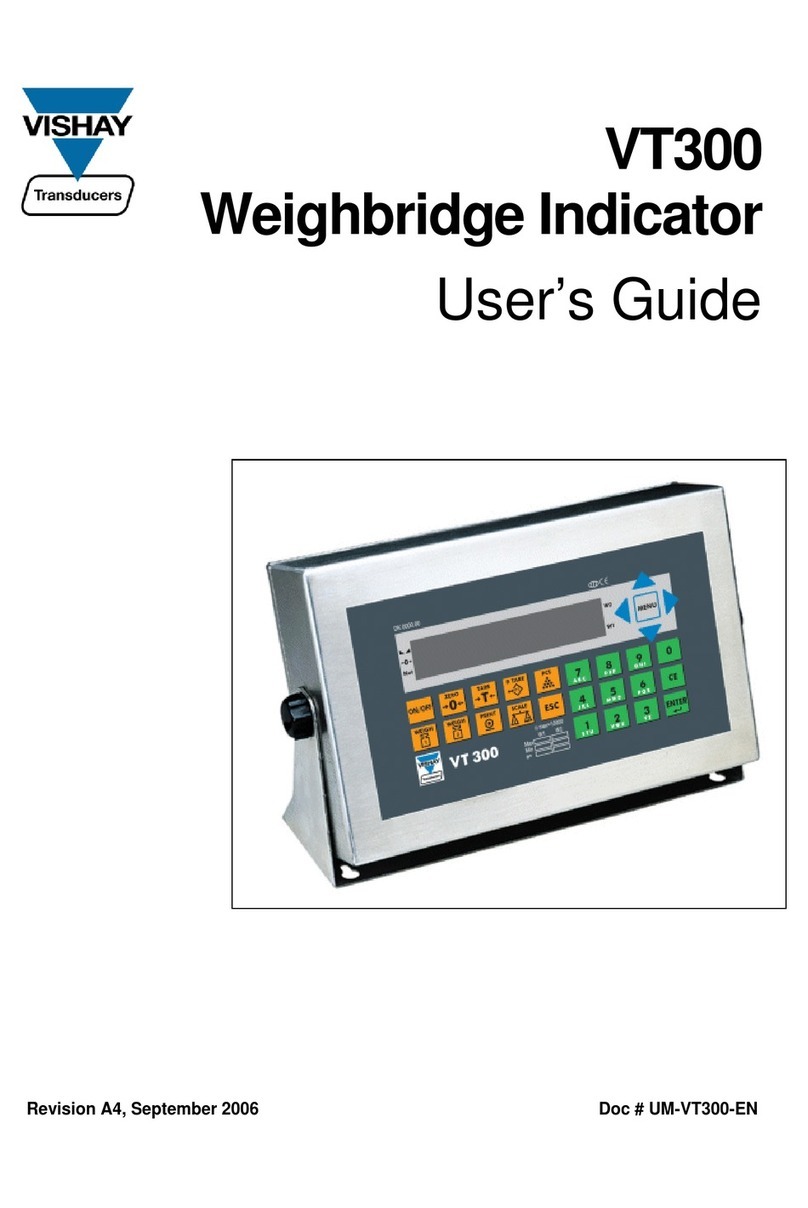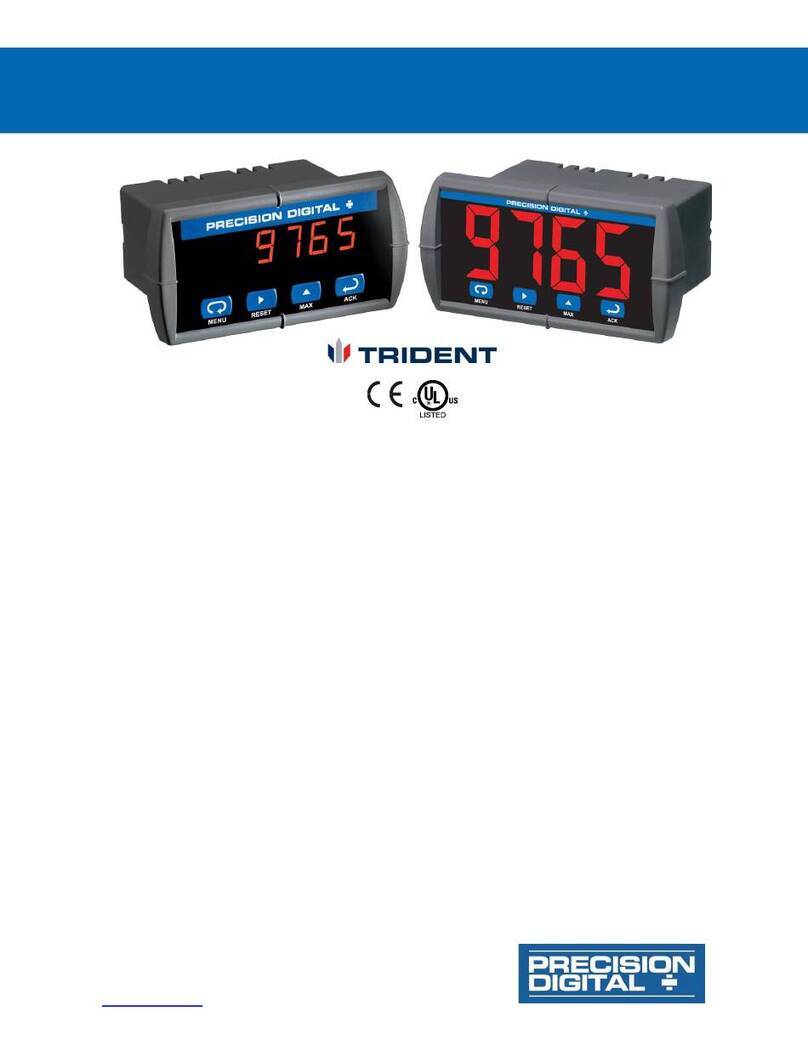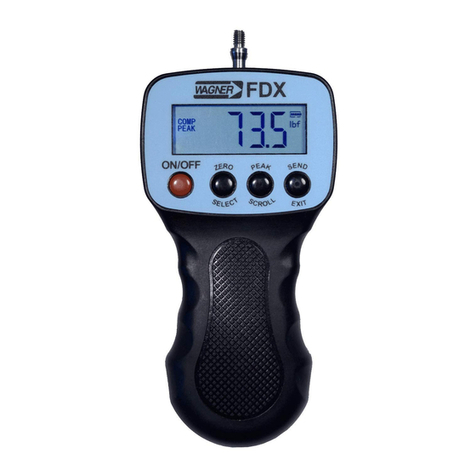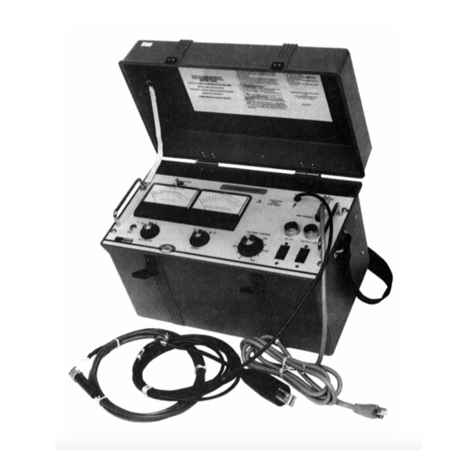Peak Electronics Equivalent Series User manual

Atlas ESR Gold
Equivalent Series Resistance and Capacitance Meter
(with high speed capacitance measurement)
Model ESR70G
(Firmware 6.0)
Designed and manufactured with pride in the UK
User Guide
©
Peak Electronic Design Limited 2004/2021
In the interests of development, information in this guide is subject to change without notice.
E&OE
EN70G-14

ESR70 User Guide November 2021 – Rev 14
Page 2
Want to use it now?
We understand that you want to use your ESR70 right now.
The unit is ready to go and you should have little need to refer to
this user guide, but please make sure that you do at least take a
look at the very important notices on page 4!
Contents Page
Introduction ......................................................................... 3
Important otices ................................................................ 4
otes on ESR ...................................................................... 5
Analysing capacitors ........................................................ 6-8
Typical values of ESR .................................................... 9-10
Audible Alerts ................................................................... 11
Probe Compensation ......................................................... 12
Care of your ESR70 .......................................................... 13
Appendix A – Troubleshooting ......................................... 14
Appendix B – Technical Specifications ............................ 15
Appendix C – Statutory Information ................................. 16
This user guide has been written to accompany the ESR70 meter with revision
6.0 firmware. Other revisions of firmware may differ in operation, features
and specifications. The firmware version is displayed briefly upon power-up.

ESR70 User Guide November 2021 – Rev 14
Page 3
Introduction
The Peak Atlas ESR70 is an advanced instrument designed
specifically for the analysis of capacitor equivalent series resistance
(in or out of circuit). Where possible, capacitance is also displayed.
Summary Features:
ESR range of 0 to 40 with resolution as low as 0.01.
Integrated controlled discharge circuitry reduces the need for
the user to manually discharge capacitors before test (see note).
Use in or out of circuit for ESR and low-ohms resistance
measurement.
Audible alerts for quick user-feedback of ESR test status.
Automatic analysis start when a component is detected.
Automatic and manual power-off.
Gold Features:
Enhanced capacitance range of 0.3µF to 90,000µF.
Capacitance over 125µF is now measured at 10x higher current
(20mA instead of 2mA) for rapid measurement.
ew triple-slope measurement method reduces the influence of
parallel resistance when measuring capacitance in-circuit.
Improved in-circuit detection.
Improved ESR measurement with less influence from lead
inductance.
Improved user-options system.
Note:
The discharge circuitry exists to ensure that a charged capacitor is
less likely to damage the unit. For example, if the capacitor under test
has a potential of a few tens of volts across it, the charge is removed
automatically. It is the user’s responsibility to ensure that any
dangerously charged capacitors are safely discharged before
connection to the unit.

ESR70 User Guide November 2021 – Rev 14
Page 4
Important Notices
Please o serve the following guidelines:
This instrument must EVER be connected to powered
equipment/components.
It is the user’s responsibility to ensure that any dangerously
charged capacitors are safely discharged before connection
to the unit.
To allow the self-protection mechanism to function, always
ensure that the ESR70 has completed any analysis before
connecting the test probes to a component.
Failure to comply with these warnings may result in
personal injury, damage to the equipment under test,
damage to the ESR70 and invalidation of the manufacturer's
warranty.
Avoid rough treatment, hard knocks and extreme
temperatures.
This unit is not waterproof.

ESR70 User Guide November 2021 – Rev 14
Page 5
Notes on ESR
ESR (Equivalent Series Resistance),
as its acronym implies, is the value of
resistance that is effectively in series
with an ideal capacitor.
o capacitor is ideal of course, the detailed equivalent circuit of a typical
capacitor is very complex. For many electrolytic capacitors however, the most
important parameters regarding the capacitor’s performance are the
capacitance and the ESR.
An increase in ESR (due to age, abuse or temperature cycling) can result in
poor capacitor performance. The capacitor becomes less “ideal” and starts to
dissipate more power, an ideal capacitor, of course, dissipates zero power.
Capacitor manufacturers typically quote the ESR of their products at
50-100kHz, which is similar to the test frequency used by the ESR70.
Sometimes, manufacturers quote ESR at 100Hz or 120Hz as the capacitors
may be aimed at rectified mains power applications. ESR is generally not very
frequency dependent however, so it can be reasonably considered equivalent
to readings taken at 50-100kHz.
Note: The ESR70 automatically ignores the reactance of the capacitor. So
although a 1µF capacitor would have a reactance of about 3.2 at 50kHz,
the displayed value of ESR should be the true ESR value (the real bit of
resistance that is in series with the reactance).
ESR
C

ESR70 User Guide November 2021 – Rev 14
Page 6
Analysing Capacitors
The ESR70 is designed to analyse capacitor ESR in or out of circuit. The two
test probes can be connected to the component any way around. Remember
though that in-circuit testing can result in less accurate readings.
Important: To minimise risk of damage to the unit, make sure that the
ESR70 has completed any previous analysis before attaching the test
probes to the capacitor. This ensures that the built-in protection circuit is
ready for any charge that may be present on the capacitor.
The ESR70 must first be switched on
by briefly pressing the on-test button.
The unit will start a component
analysis when it detects that the open
circuit probes have been applied to a
component or when on-test button is
re-pressed.
If the capacitor is charged (<50V), the
ESR70 will attempt to discharge the
capacitor while showing the progress
of the procedure:
If the ESR70 cannot recognise the
component connected to the test
probes, or the capacitance is out of
range, the following message may be
displayed:
Monitoring for
component...
Open circuit or
low capacitance.
Discharging...
Capacitor V= 23V
Analysing...

ESR70 User Guide November 2021 – Rev 14
Page 7
Analysing Capacitors
continued…
The ESR analysis typically takes around 2 seconds to complete, followed by
up to around 3 seconds for the capacitance measurement (depending on the
characteristics of the capacitor).
As soon as a valid ESR reading has
been obtained, the ESR value is
displayed while the instrument
proceeds to measure the capacitance.
If the presence of external circuitry did
not adversely affect the capacitance
measurement, the capacitor value will
be displayed.
If the capacitance could not be
accurately determined (perhaps it is in-
circuit or a “leaky” capacitor), the
display will only show the value of
ESR measured.
If the instrument cannot detect any
sensible capacitor behaviour, then it
may display this:
It is not necessary to wait for the capacitance measurement to complete if you
are not interested in the capacitance value. If the probes are removed from the
component under test before the
capacitance measurement has
completed, the display will confirm
that the capacitance has not be
measured.
It can be useful to disconnect the probes before the capacitance measurement
has completed if you are wanting to simply check the ESR of multiple
components in succession.
Measuring C...
ES = 0.21
Cap = 476.6µF
ES = 0.21
In-Circuit/Leaky
ES = 0.21
(C not measured)
ES = 0.21
In-Circuit/Short
ES = 0.21

ESR70 User Guide November 2021 – Rev 14
Page 8
Analysing Capacitors
continued…
If ESR exceeds the maximum that can be measured, the display may show:
The ESR measurement range is automatically determined during the analysis.
Typically, the resolution for ESR measurement is as shown in the table below:
ESR Value Automatically
s
el
ected test current
Nominal measured
resol
ution
0.00 Ω – 2.00 Ω 20mA 0.01 Ω
2.0 Ω – 20.0 Ω 2mA 0.1 Ω
20.0 Ω – 40.0 Ω 1mA 0.2 Ω
Although the measurement resolution is generally determined by the absolute
value of the ESR (as shown in the above table), low capacitance values can
result in a poorer ESR measurement resolution.
If measuring capacitors connected in parallel, the ESR reading will
effectively be the value of all the ESRs in parallel, not just the ESR of the
capacitor in contact with the probes.
The test current for the capacitance measurement is automatically
determined and will be either 2mA or 20mA.
20mA is typically used if the capacitance is >125μF and if ESR<10Ω.
This is to ensure that the capacitance measurement is high speed even for
very large capacitances whilst also minimising the influence of leakage
current that can be significant with large capacitances.
If 20mA has been used then a *
**
*
will appear next to the capacitance.
Cap = 476.6µF
ES = >40.0
In-Circuit/Leaky
ES = >40.0
or

ESR70 User Guide November 2021 – Rev 14
Page 9

ESR70 User Guide November 2021 – Rev 14
Page 10
Typical Values of ESR
continued…
It is not possible to provide a definitive rule for values of ESR that are
acceptable for all situations. However, a ta le of typical ESR figures for a
range of capacitance and voltage ratings is shown on the previous page.
The expected value of ESR largely depends on the capacitance value and the
voltage rating of the capacitor but also depends on temperature ratings and
other factors. Some capacitors are manufactured to exhibit very low ESR
values, whilst conventional low-cost parts are likely to exhibit higher values
but may still be acceptable.
As a guide only, the following log-scaled graph shows “typical” values of
ESR for a range of different capacitance and voltage ratings.
6.3V
50V
630V
Please note that the figures shown on the previous page are only typical
figures for standard grade electrolytics at room temperature, please verify
readings against expected values for the particular type of capacitor you are
testing.
For any particular capacitance and voltage rating, a lower ESR reading is
generally better than a higher ESR reading. For good quality capacitors it
is common for the ESR readings to be much lower than the figures shown
in the previous table.

ESR70 User Guide November 2021 – Rev 14
Page 11
Sounds and Audible Alerts
The ESR70 can produce audible tones to assist the user.
The various tones are summarised below:
Condition / Operation
Sound Type
Start
Analysis
Short Blip
End Analysis
Sh
ort Blip
Measured ESR > 40Ω
High
-
Low “Beep Barp”
Measured ESR < 5.0Ω
Single Bell “Ping”
Measured ESR < 1.0Ω
Double Bell “Ping
-
Ping”
You can switch audible alerts on or off
by holding down the on-test button
for about 4 seconds until the “Sound
and probe options” is displayed.
Then you will be asked if you want to
enable the sounds or not.
Pressing the relevant button will be confirmed with one of the following
messages:
You will then be asked if you wish to perform a probe compensation
procedure, see next page. (You can press “no” or simply wait a few seconds if
you do not need to perform a probe compensation).
Sound On
Sound Off
Sound and probe
options...
Enable Sound?
On=YES off=NO

ESR70 User Guide November 2021 – Rev 14
Page 12
robe Compensation
To ensure good repeatable readings, particularly for low values of ESR, it may
be necessary to perform a simple Probe Compensation procedure.
Press and hold down the on-test
button for about 4 seconds until the
following message is displayed:
You’ll first be asked if you want to
enable sound or not. Select your
desired option and continue. Then you
will be asked if you want to perform a
probe compensation procedure.
When you select “YES”, the unit will
confirm that you have selected the
probe compensation mode.
You will then be asked to short the
probes together (by interlocking the
jaws of each croc clip). Then press the
on-test button.
After a short delay, the display will
confirm that the procedure is complete
and it will then perform a self-test of
the ESR (which should be very close
to 0.00Ω).
If the following message is displayed
then the probes may not have been
correctly shorted during the above
proecedure. This message may also
e displayed if any of the pro e
connections are faulty.
It is useful to test the integrity of the probe compensation by measuring
fixed resistors of 1Ω and 10Ω to verify the correct ESR reading
respectively.
Probe
Compensation
Short probes
and press TEST.
Compensation
Fail. Try again.
Sound and probe
options...
Compensate probe
On=YES off=NO
In-Circuit/Short
ES = 0.00

ESR70 User Guide November 2021 – Rev 14
Page 13
Care of your ESR70
The ESR70 should provide many years of service
if used in accordance with this user guide. Care
should be taken not to expose your unit to
excessive heat, shock or moisture. Additionally, the battery
should be replaced at least every 12 months to reduce the risk of leak
damage.
If a low battery warning message
appears, replacement of the battery is
essential.
Immediate replacement of the battery is EXTREMELY IMPORTA T as the
built-in protection mechanism may not function correctly if the battery
condition is poor and therefore render your unit susceptible to damage from
even low energy charged capacitors.
The ESR70 will not operate if a low battery condition is encountered.
ew batteries can be purchased from many retailers and directly from Peak
Electronic Design Ltd or an authorised agent.
Battery type: AAA cell (Alkaline, iMh or Lithium-Iron-Disulphide).
Battery access: To replace the battery, place the unit face down on a clean
smooth surface and unscrew the three screws to remove the rear panel.
Remove the old battery and insert a new one, take care to observe the correct
polarity. Carefully replace the rear panel and ensure that you do not pinch the
test leads. Do not over-tighten the screws.
** Warning **
Low Battery

ESR70 User Guide November 2021 – Rev 14
Page 14
Appendix A - Troubleshooting
Pro l
em
Cause / Possi le Solution
ESR value when probes
are shorted is not close
to 0
Ω
Perform a probe compensation.
Display shows
emoving trace
charge
This message is displayed if the ESR70 has
detected that the attached capacitor may be
exhibiting “Soakage” or “Dielectric
Absorption”, this is quite normal. The
instrument then ensures that the capacitor is
very well discharged and helps to prevent
voltage developing across the capacitor after
the normal discharge procedure has
completed.
Display shows
Auto discharge
taking too long!
The unit attempts to remove charge from the
capacitor using a controlled discharge
procedure. If this takes longer than 60 seconds
then the discharge process will be aborted. It
is recommended that you safely discharge the
cap
acitor manually and try analysis again.
Display shows
Warning! V=132V
Safely discharge
If the voltage across the capacitor is greater
than 50V then the ESR70 will not attempt to
discharge the capacitor, please safely
discharge the capacitor manually.
Display shows
Self Test Fail
Code 2
It is possible that a hardware failure has
occurred, please contact Peak Electronic
Design Limited for assistance.
Display shows
In-Circuit/Leaky
even though it is a new
capacitor and out-of-
circuit.
The ESR70 will display “In-Circuit/Leaky” if
the charge curve is non-linear by more than
10%. Some capacitors (even new ones) can
exhibit a non-linear charge characteristic and
means that the capacitance cannot be reliably
measured. “Exercising” the capacitor can help,
s
o try to measure it again a few times.

ESR70 User Guide November 2021 – Rev 14
Page 15
Appendix B - Technical Specifications
All values are at 20C unless otherwise specified.
Parameter Min Typ Max Note
Peak test current into S/C
±
20
mA
±2
3
mA
Peak te
st volt
age, full scale ESR
±40mV
±4
6
mV
Pea
k test voltage across O/C
±
5.5
V
Capacitance measurement range 0.3μF 90,000μF 1
Capacitance accuracy
±4% ±0.2μF
2
Capacitance test current
1.
7
mA
2.0
mA
2
.
3
mA
3
17mA
20
mA
2
3
mA
4
Capacitance measurement ΔV ±500mV 5
ESR measurement range
0Ω
4
0Ω
ESR resol
ution for ESR < 2Ω
0.01Ω
0.02Ω
ESR resolution for ESR > 2
Ω
0.1Ω
0.2Ω
ESR accuracy f
o
r ESR < 2Ω
±2
% ±0.02Ω
ESR accuracy for ESR > 2Ω
±2
% ±0.2Ω
ESR
test
current
±
0.8mA
±
2
3
mA
ESR test frequency
48
kHz
50kHz
104kHz
5
Abuse voltage (for C <
10μF)
±275V
6
Abuse
voltage (for C > 10μF)
±50V
6
Auto
-
Disch
a
rge voltage limit
±50V
6
A
u
to
-
Discharge RMS
power
1.5W
Battery type
AAA Alkaline, iMh or Lithium-Iron-Disulphide
Battery
l
ife
Typically ~
1
5
00
operations
7
Inactivity
power
-
down period
6
0 seconds
Dimensions (excludin
g
leads)
103 x
70 x 20 mm
Operating temperature range 15C 35C 8
Notes
1. The UK convention of the decimal point “.” is used in most of our products. This
must not be confused with the comma thousands separator “,”.
2. Capacitance accuracy quoted for capacitance between 10μF and 10,000μF.
3. Capacitance test current of 2mA if C < ~125μF or ESR > ~10Ω.
4. Capacitance test current of 20mA if C > ~125μF and ESR < ~10Ω.
5. Subject to revision.
6. Maximum abuse voltage rated limitation of internal protection electronics.
Probes, leads and unit are not certified for high voltage use.
7. Based on <1 minute per operation.
8. Also subject to acceptable LCD visibility.

ESR70 User Guide November 2021 – Rev 14
Page 16
Appendix C – Statutory Information
Peak Satisfaction Warranty
If for any reason you are not completely satisfied with the ESR70, within 14
days of purchase, you may return the unit to your distributor. You will receive
a refund covering the full purchase price if the unit is returned in perfect
condition.
Statutory Warranty
The statutory warranty is valid for 24 months from date of purchase. This
warranty covers the cost of repair or replacement due to defects in materials
and/or manufacturing faults.
The warranty does not cover malfunction or defects caused by:
a) Operation outside the scope of the user guide.
b) Unauthorised access or modification of the unit (except for battery
replacement).
c) Accidental physical damage or abuse.
d) ormal wear and tear.
The customer’s statutory rights are not affected by any of the above.
All claims must be accompanied by a proof of purchase.
WEEE (Waste of Electrical and Electronic Equipment),
Recycling of Electrical and Electronic Products
It is not permissible to simply throw away electrical and electronic equipment.
Instead, these products must enter the recycling process. Each country has
implemented the WEEE regulations into national law in slightly different
ways. Please follow your national law when you want to dispose of any
electrical or electronic products. More details can e o tained from your
national WEEE recycling agency.
At Peak Electronic Design Ltd we are committed to continual product development and improvement.
The specifications of our products are therefore subject to change without notice.
Designed and manufactured in the UK © 2004/2021 Peak Electronic Design Limited - E&OE
www.peakelec.co.uk Tel. +44 (0) 1298 70012
This manual suits for next models
2
Table of contents
Other Peak Electronics Measuring Instrument manuals
Popular Measuring Instrument manuals by other brands
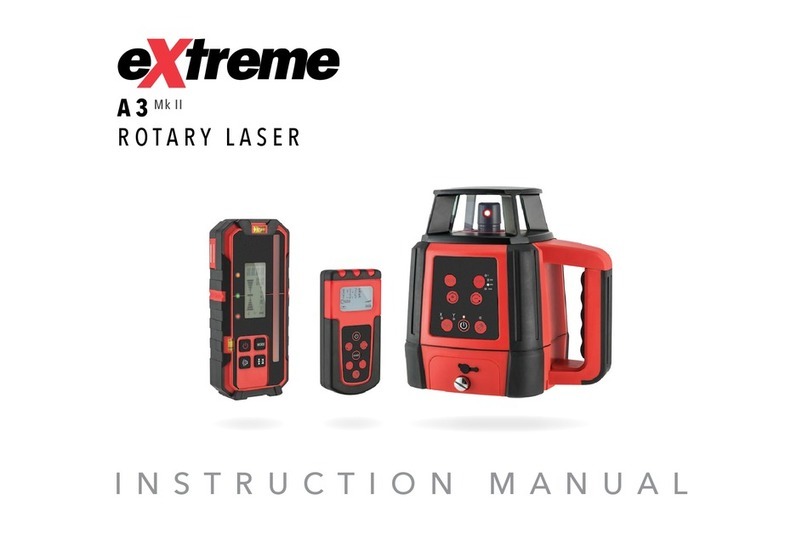
Extreme Networks
Extreme Networks A3 MK II instruction manual
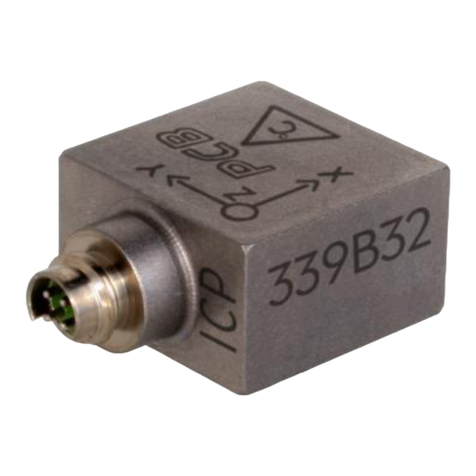
PCB Piezotronics
PCB Piezotronics ICP 339B32 Installation and operating manual

Airflow
Airflow Hi-flow 1L instruction manual
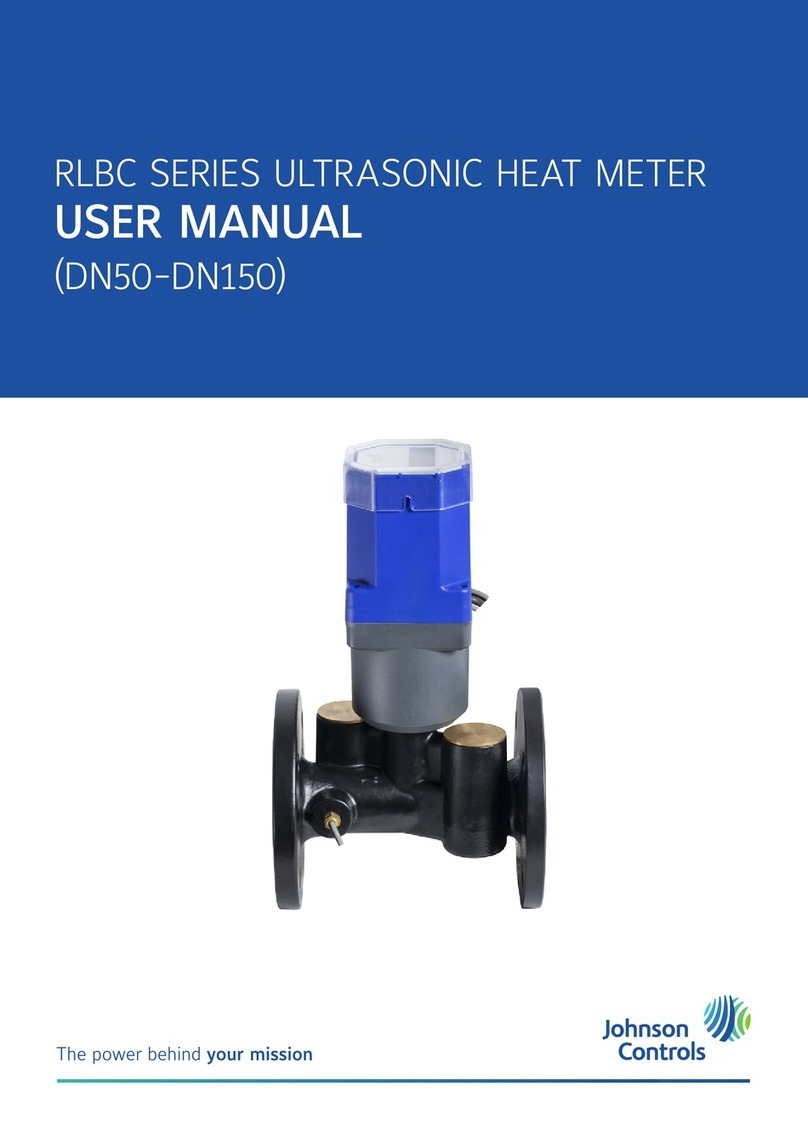
Johnson Controls
Johnson Controls RLBC Series user manual

Streetwize
Streetwize SWDTG2 Instructions for use
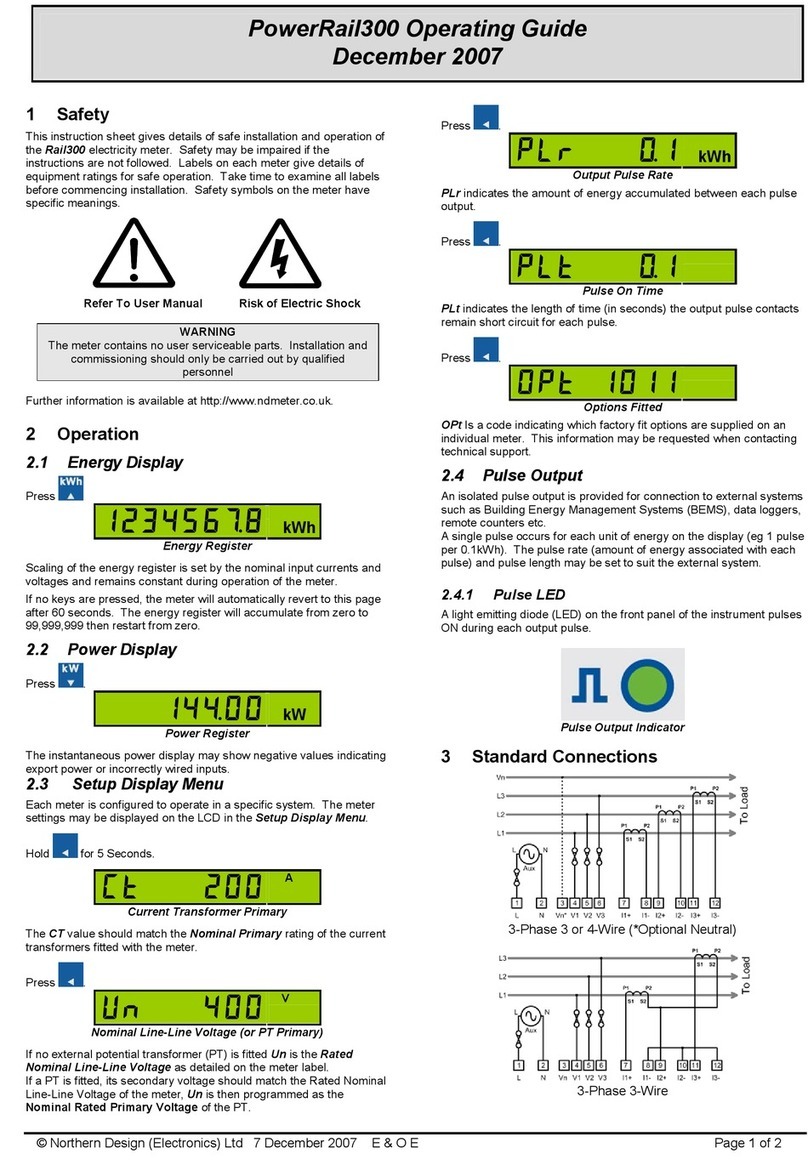
Northern Design
Northern Design PowerRail300 operating guide

